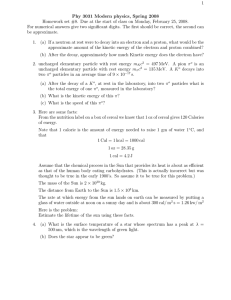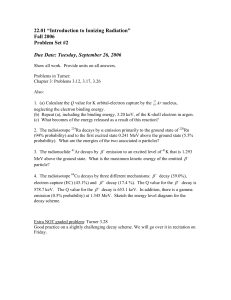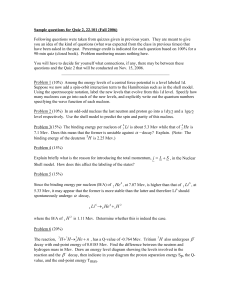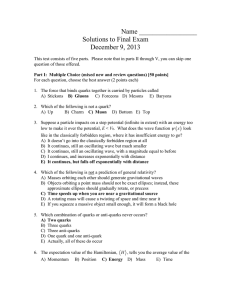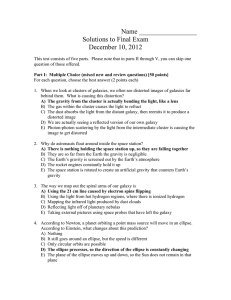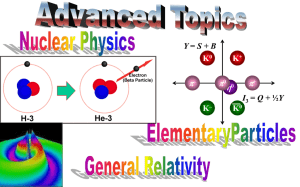Sample questions for Quiz 2, 22.101 (Fall 2004)
advertisement
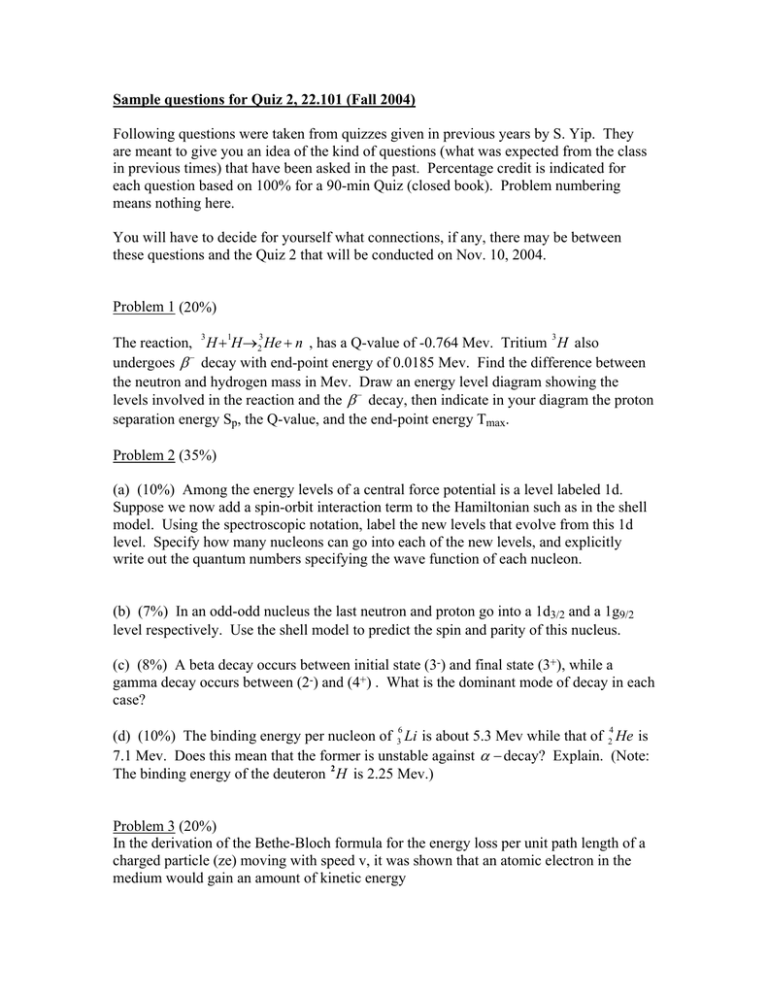
Sample questions for Quiz 2, 22.101 (Fall 2004) Following questions were taken from quizzes given in previous years by S. Yip. They are meant to give you an idea of the kind of questions (what was expected from the class in previous times) that have been asked in the past. Percentage credit is indicated for each question based on 100% for a 90-min Quiz (closed book). Problem numbering means nothing here. You will have to decide for yourself what connections, if any, there may be between these questions and the Quiz 2 that will be conducted on Nov. 10, 2004. Problem 1 (20%) The reaction, 3 H + 1H→2 He + n , has a Q-value of -0.764 Mev. Tritium 3 H also undergoes β − decay with end-point energy of 0.0185 Mev. Find the difference between the neutron and hydrogen mass in Mev. Draw an energy level diagram showing the levels involved in the reaction and the β − decay, then indicate in your diagram the proton separation energy Sp, the Q-value, and the end-point energy Tmax. 3 Problem 2 (35%) (a) (10%) Among the energy levels of a central force potential is a level labeled 1d. Suppose we now add a spin-orbit interaction term to the Hamiltonian such as in the shell model. Using the spectroscopic notation, label the new levels that evolve from this 1d level. Specify how many nucleons can go into each of the new levels, and explicitly write out the quantum numbers specifying the wave function of each nucleon. (b) (7%) In an odd-odd nucleus the last neutron and proton go into a 1d3/2 and a 1g9/2 level respectively. Use the shell model to predict the spin and parity of this nucleus. (c) (8%) A beta decay occurs between initial state (3-) and final state (3+), while a gamma decay occurs between (2-) and (4+) . What is the dominant mode of decay in each case? 6 (d) (10%) The binding energy per nucleon of 3 Li is about 5.3 Mev while that of 24 He is 7.1 Mev. Does this mean that the former is unstable against α − decay? Explain. (Note: The binding energy of the deuteron 2 H is 2.25 Mev.) Problem 3 (20%) In the derivation of the Bethe-Bloch formula for the energy loss per unit path length of a charged particle (ze) moving with speed v, it was shown that an atomic electron in the medium would gain an amount of kinetic energy pe2 2(ze)2 T= = 2m mv2 b 2 where m is the electron mass and b the impact parameter. Suppose one can ignore the binding energy of the atomic electrons so that each electron is ejected, find the number of electrons per unit path length with kinetic energy in dT about T. (Hint: Think of the number of electrons in a collision cylinder, with radius b, thickness db, and length ∆ x.) Problem 4 (15%) Sketch the energy variations of the stopping power (energy loss per unit path) of both electrons and protons in lead (in the same figure). Discuss all the features of these two curves that you know. Problem 5 (20%) On the basis of the Bethe-Bloch formula, the stopping power of a material for incident electrons (with kinetic energy Te ) can be related to that for incident alpha particles (with kinetic energy Tα ). Denoting the two by −(dT / dx)e and −( dT / dx)α respectively, sketch the two curves on the same graph to show how knowing one allows you to find the other. Problem 6 (15%) At time t = 0 you are given an atom that can decay through either of two channels, a and b, with known decay constants λ a and λ b . Find the probability that it will decay by channel a during the time interval between t1 and t2 , with t1 and t2 arbitrary. Interpret your result. Problem 7 (40%) Discuss briefly the significance of each of the following. Give a definition whenever it is appropriate. (If you use the same notation as the Lecture Notes, you may assyme the symbols are already defined in the Notes.) (a) (b) (c) (d) (e) (f) (g) (h) The asymmetry term in the empirical mass formula. Mass parabolas for isobars for even A (give a sketch). Mass or energy requirements for electron capture. Secular equilibrium in radioactive decay. Bragg curve for charged particles (give sketch). Bethe formula for stopping power and its relativistic corrections. Charge and mass dependence of bremstrahlung intensity. Mass absorption coefficient for charged particles.
